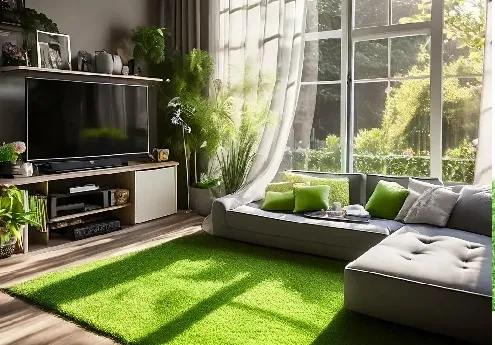
- Afrikaans
- Arabic
- Belarusian
- Bengali
- Czech
- Danish
- Dutch
- English
- Esperanto
- Estonian
- Finnish
- French
- German
- Greek
- Hindi
- Hungarian
- Icelandic
- Indonesian
- irish
- Italian
- Japanese
- kazakh
- Rwandese
- Korean
- Kyrgyz
- Lao
- Latin
- Latvian
- Malay
- Mongolian
- Myanmar
- Norwegian
- Persian
- Polish
- Portuguese
- Romanian
- Russian
- Serbian
- Spanish
- Swedish
- Tagalog
- Tajik
- Thai
- Turkish
- Turkmen
- Ukrainian
- Urdu
- Uighur
- Uzbek
- Vietnamese
artificial grass field
Dec . 18, 2024 03:05 Back to list
The Rise of Artificial Grass Fields
In recent years, artificial grass fields have emerged as a popular choice in sports and recreational spaces around the world. The advancement of technology has led to the development of high-quality synthetic turf that closely resembles natural grass while offering numerous practical benefits. This article explores the significance of artificial grass fields, their advantages, and their growing influence on various sectors, from sports to landscaping.
Artificial grass, also known as synthetic turf, was initially developed for use in stadiums and sports fields. The first-ever installation occurred in the mid-1960s with the emergence of Astroturf, primarily used for American football. Since then, the technology has evolved significantly. Modern synthetic grass fields are made from polyethylene, polypropylene, or nylon, creating a durable surface that can withstand heavy use while maintaining its aesthetic appeal.
One of the primary advantages of artificial grass fields is their low maintenance requirements. Unlike natural grass, which requires regular mowing, watering, and fertilization, synthetic turf is virtually maintenance-free. This characteristic makes it an attractive option for institutions and municipalities looking to reduce costs associated with groundskeeping. Moreover, artificial surfaces remain green and lush all year round, regardless of the season or climate conditions. This consistency enhances the visual appeal of sports complexes and recreational areas.
In addition to aesthetic benefits, artificial grass fields also provide improved safety for athletes. The padding and cushioning beneath the turf can significantly reduce the risk of injuries, such as sprains and fractures. Furthermore, synthetic surfaces are often designed to drain water efficiently, minimizing the risk of muddy patches or standing water, which can lead to dangerous playing conditions. As a result, athletes can train and compete in a safe environment, ultimately enhancing their performance.
artificial grass field

The use of artificial grass is not limited to sports fields. Many parks, playgrounds, and residential areas have incorporated synthetic turf into their designs. This trend can be attributed to the versatility of artificial grass, which can be customized for various applications, including landscaping and recreational activities. Homeowners and businesses are increasingly choosing synthetic grass for their gardens and yards because it provides a tidy, green appearance without the need for intensive care. Additionally, artificial turf can be installed in places where natural grass struggles to grow successfully, such as shaded areas or regions with poor soil quality.
Environmental considerations also play a crucial role in the growing popularity of artificial grass fields. Synthetic turf does not require the use of harmful pesticides or fertilizers, reducing the chemical runoff that can impact local ecosystems. Furthermore, many products are now made from recycled materials, contributing to sustainability efforts. While there is some debate over the environmental impact of synthetic fields, industry innovations continue to focus on making products more eco-friendly.
Despite the numerous benefits, the transition to artificial grass is not without its challenges. Some critics argue that synthetic turf can contribute to heat retention, creating significantly warmer surfaces, which can affect player comfort and performance. Additionally, concerns about the materials used in production and potential microplastics impacting the environment have sparked ongoing discussions about the best practices for installation and disposal.
In conclusion, artificial grass fields offer a compelling alternative to natural grass, providing numerous advantages in terms of maintenance, safety, versatility, and environmental impact. As technology progresses and the focus on sustainable practices intensifies, the popularity of synthetic turf is expected to continue growing. From sports arenas to backyard gardens, artificial grass is changing the landscape of recreational and athletic spaces, proving that innovation can fulfill both functional and aesthetic needs.
-
The Benefits of Artificial Turf for Indoors
NewsJul.15,2025
-
How Artificial Grass Suppliers Ensure Quality Products
NewsJul.15,2025
-
Artificial Grass and Pets: A Space for Relaxation
NewsJul.08,2025
-
Balcony & Outdoor Decoration with Artificial Grass
NewsJul.08,2025
-
Best Indoor Artificial Grass for Home
NewsJul.07,2025
-
Best Pet Turf for Dogs: Safe & Durable Artificial Grass Options
NewsJul.07,2025
Products categories









